wikiHow is a “wiki,” similar to Wikipedia, which means that many of our articles are co-written by multiple authors. To create this article, 9 people, some anonymous, worked to edit and improve it over time.
There are 13 references cited in this article, which can be found at the bottom of the page.
This article has been viewed 62,257 times.
Learn more...
Postpartum hemorrhage is defined as abnormal amounts of bleeding from the vagina post-delivery. This bleeding can occur within 24 hours after delivery or after a few days. PPH is a leading cause of women post-delivery today, and results in 8% of the deaths among women after delivery. The PPH mortality figures are much higher in under-developed and developing nations. However, it is normal to have some amount of bleeding (known as lochia) after you have delivered your baby. This bleeding often lasts for a few weeks. It is important to learn how to differentiate PPH from lochia early on, in order to avoid complications.
Steps
Recognizing High Risk Situations
-
1Know which conditions can cause a PPH. Several conditions that occur before, during, or after delivery can result in the precipitation of PPH. Some of these conditions require close monitoring of the woman during and after delivery to rule out PPH. It is important to know about these conditions, as they increase a woman's chances of suffering from this condition.[1]
- Placenta Previa, placental abruption, retained placenta, and other placental abnormalities
- Multiple pregnancies
- Pre-eclampsia or increased blood pressure during pregnancy
- History of PPH in a previous delivery
- Obesity
- Uterine abnormalities
- Anemia
- Emergency caesarean section
- Bleeding during pregnancy
- Long lasting labour more than 12 hours
- Baby’s birth weight above 4 kgs
-
2Understand that uterine atony is a cause of major blood loss. Postpartum hemorrhage, or blood loss after giving birth, is one of the world’s leading causes of maternal death, even after safe delivery. There are several reasons why excessive bleeding of more than 500 ml after delivery of the baby occurs. One of this is called uterine atony.[2]
- Uterine atony is when the uterus of the mother (the part of the female reproductive system that housed the baby) is having difficulties in going back to its original state.
- The uterus remains loose, hollow and non-contracting when it should be firm and contracting. This causes the passage of blood to flow easier and faster, contributing to postpartum hemorrhage.
Advertisement -
3Know that trauma during childbirth can lead to a postpartum hemorrhage. Another reason why excessive bleeding occurs is when trauma or injury occurs as the baby exits the body.[3]
- Trauma may be in the form of cuts, which can be caused by using assistive devices during delivery
- Alternatively, lacerations can occur when the baby is larger than average and is coming out rapidly. This may cause a tear in the vaginal opening.
-
4Understand that sometimes the blood does not flow out of the woman’s body. Bleeding caused by PPH will not always flow out of the body. At times, bleeding occurs internally and if there’s no outlet for the blood it will move toward the small crevices found in between bodily tissues and will form what is called a haematoma.
Recognizing Bleeding Associated with PPH
-
1Keep track of the quantity of blood. The type of bleeding that occurs immediately after delivery, within 24 hours of delivery, or a few days after delivery is crucial to help rule out a PPH. The most important parameter for this purpose is the quantity of the bleeding.[4]
- Any bleeding above 500 ml after a vaginal delivery and above 1000 ml after a caesarean section is considered as a PPH.
- In addition, bleeding that exceeds 1000 ml is labeled as severe PPH and requires immediate medical intervention, especially if there are additional risk factors.
-
2Look at the flow and texture of the blood. PPH is generally continuous in flow and is profuse, with or without several large clots. However, clots are much more common in a PPH that develops after a few days of delivery, and this type of bleeding may also be more gradual in flow.
-
3Know that the blood’s odor may help you determine whether or not there is a PPH. Some additional characteristics that can help differentiate a PPH from normal post-delivery bleeding or lochia (vaginal discharge consisting of blood, tissue from the lining of the uterus and bacteria) are its odor and flow. Suspect a PPH if your lochia has an offensive smell, or if your flow suddenly increases after delivery.[5]
Recognizing Accessory Symptoms
-
1Seek medical help if you recognize any severe symptoms. Acute PPH is often accompanied by signs of shock such as reduced blood pressure, tachycardia or low pulse rate, fever, rigors, and faintness or collapse. These are the most definite indications of a PPH, but also the most dangerous. They require immediate medical intervention.[6]
-
2Watch for signs that occur a few days after delivery. There are some less severe yet dangerous signs of a secondary PPH that tend to occur a few days after delivery. These include fever, abdominal pain, painful urination, general weakness, abdominal tenderness over the suprapubic area and adnexae.
-
3Go to the hospital if you see these warning signs. PPH is a medical emergency and requires immediate hospitalization and measures to stop the bleeding. Hence, it isn’t a condition that can be ignored. If you experience any of the following symptoms after delivery, contact your OB immediately, as you could be developing shock.[7]
- Low blood pressure
- Low pulse rate
- Oliguria or reduced urine
- Sudden and continuous vaginal bleeding or passing of large clots
- Fainting
- Rigors
- Fever
- Abdominal pain
Creating a Nurse Care Plan (For Nurses and Doctors)
-
1Understand what a nurse care plan is. The most important thing for decreasing the occurrence of death after childbirth is the ability to catch the signs of bleeding early in its course and pinpoint its cause. Quickly identifying the cause of the bleeding allows for faster intervention.[8]
- A nursing care plan is a very useful tool in doing just that. There are five steps in the nursing care plan. These steps are assessment, diagnosis, planning, intervention and evaluation.
- In order to make a nursing care plan on postpartum hemorrhage, it is important to know what to look for and what to do in each of these steps.
-
2Pay close attention to mothers who are predisposed to developing a postpartum hemorrhage. Before carrying out an assessment, it is important to take note of the mother’s history. There are several predisposing factors that make the mother more prone to postpartum hemorrhage, as all women who had just given birth are prone to excessive blood loss. If one or more of the following are present in the mother, assessment should be done at least every 15 minutes during and following delivery until the mother is not showing any signs of bleeding.[9]
- These predisposing factors include a distended uterus caused by carrying a large infant inside or having excessive fluid in the placenta (the sac surrounding the infant), having given birth to more than five children, rapid labor, prolonged labor, utilization of assistive devices, a caesarean birth, removal of the placenta manually and an inverted uterus.
- Predisposing factors to excessive bleeding also include mothers who have suffered from conditions such as placenta previa, placenta accreta, utilizing drugs such as oxytocin, prostaglandins, tocolytics, or magnesium sulfate, underwent general anesthesia, if the mother has clotting disorders, have suffered from hemorrhage in the previous childbirth, has uterine fibroids, or has suffered from bacterial infection of the fetal membranes (chorioamnionitis).
-
3Evaluate the mother’s condition frequently. In assessing the mother, there are certain physical aspects that need to be checked regularly to determine if there is an ongoing postpartum hemorrhage and also to help determine the cause. These physical aspects include:
- The fundus (the top part of the uterus opposite the cervix), the bladder, the amount of lochia (the fluid coming out of the vagina that is composed of blood, mucus, and tissue from the uterus), the four vital signs (temperature, pulse rate, respiratory rate and blood pressure) and skin color.
- When assessing these areas, it is important to note what to look out for. Follow the steps below for more info.
-
4Monitor the fundus. it is important to check for the consistency and the location pf the fundus. Normally, the fundus should feel firm upon palpation and the level will be inclined towards the umbilical (belly button) area. Any changes to this - for example if the fundus feels soft or is difficult to locate - could be indicative of postpartum hemorrhage.
-
5Look at the bladder. There might be instances when the bladder is causing the hemorrhaging and this is indicated by the fundus being displaced above the umbilical (belly button) area.
- Let the mother urinate and if after urinating the bleeding goes away, then it is the bladder causing the displacement of the uterus.
-
6Assess the lochia. In assessing the amount of discharge coming out from the vagina, it is important to weigh the pads being used before and after in order to get accurate documentation. Excessive bleeding should be indicated by saturation of one pad within fifteen minutes.[10]
- Sometimes, the discharge often goes unnoticed and it can be checked by asking the mother to turn on her side and check underneath her, especially in the buttocks area.
-
7Check the mother’s vital signs. The mother's vital signs include her blood pressure, respiratory rate (number of breaths), pulse rate, and temperature. In postpartum hemorrhage, the pulse rate should be lower than normal (60 to 100 in a minute), but could vary depending on the mother’s previous pulse rate.[11]
- However, the vital signs may not show abnormality until later the mother is already suffering from excessive blood loss. Therefore, you should assess any deviation from what is normally expected with adequate blood volume, such as warm, dry skin and pink lips and mucous membranes.
- The nails can also be inspected by pinching and releasing them. There should only be a there second interval for the color of the nail bed to return to pink.
-
8Understand that trauma could lead to excessive bleeding. If any of these changes have been assessed, the mother could be suffering from postpartum hemorrhage caused by the uterus failing to contract and getting back into its original shape. However, if the uterus has been assessed and it was found to be contracted and not dislocated, and yet there is still excessive bleeding, this could be due to trauma. In assessing for trauma, pain and external color of the vagina have to be considered.
- Pain: The mother will be experiencing deep, severe pelvic pain or rectal pain. This can be indicative of internal bleeding.
- External vaginal orifice: there will be bulging masses and skin discoloration (usually purplish to bluish black hue). This can also be indicative of internal bleeding.
- If the laceration or wound is found outside, it can be easily assessed upon visual inspection, especially if done under proper lighting.
-
9Notify other healthcare providers. If there is considerable blood loss and the cause have been determined, the next step in the nursing care plan has already been accounted for, which is the diagnosis.
- Upon confirmation of the diagnosis of postpartum hemorrhage, the first step in planning is always to inform the physician and other healthcare providers involved in the care of the mother as the nurse cannot use client-centered goals.
- The nurse’s key roles in this kind of complication is to monitor the mother, implement ways to minimize blood loss and replace it, and to report right away if there are any significant changes in the previously noted condition and if the response from the mother is not what is desired.
-
10Massage the mother’s uterus and keep track of blood loss. Nursing interventions appropriate for postpartum hemorrhage will be to continuously monitor the vital signs and the output via weighing blood soaked pads and linens. Massaging the uterus will also aid in getting it to contract and become firm again. Notifying the physicians or midwives when there is still bleeding (even during the massage) is important as well.[12]
-
11Regulate the mother’s blood levels. The nurse should have already notified the blood bank in case there is a need for blood transfusion. Regulation of intravenous flow is also the nurse’s responsibility.[13]
-
12Put the mother in the Trendelenburg position. The mother should also be positioned in what is called a modified Trendelenburg, where the legs are elevated by least 10 degrees and at most 30 degrees. The body is horizontal and the head elevated a little bit as well.
-
13Give the mother medications. The mother will usually be on a number of medications, such as oxytocin and Methergine, and the nurse should be able to determine the side effects of these medications, as they could also be life threatening to the mother.[14]
- Oxytocin is mainly used for labor induction and is safe to be given during labor; however it is also utilized after delivery. The action of the drug is to facilitate the contraction of the smooth muscles of the uterus. It is usually given through an intramuscular (usually in the upper arm) injection with a dose of 0.2 mg given every 2 to 4 hour with a maximum of 5 doses after delivery. Oxytocin has an antidiuretic effect, which means that it will inhibit urination.
- Methergine is a drug that is never given before labor, but can be given afterwards. This is because the action of Methergine is to promote sustained uterine contractions, and will therefore cause a decrease in the oxygen consumption of a baby still inside the uterus. Methergine is also given by injection intramuscularly with a dose of 0.2 mg every 2 to 4 hours. Methergine’s side effect is an increase in the body’s blood pressure. It should be noted if the blood pressure spikes up more than normal.
-
14Monitor the mother’s breathing. The nurse should be aware of any buildup of fluids inside the body by consistently listening to breath sounds. This is done in order to identify any fluid in the lungs.
-
15Evaluate the mother when the mother is in a safer state. The final step in the nursing process is evaluation. Like the assessment, the areas of concern in a mother suffering from excessive bleeding will be checked.
- The location of the uterus should be midline, with the umbilicus as the center. The uterus should be firm upon palpation.
- The mother should not be changing pads as often (using only one pad every hour or so) and there should be no leakage of blood or fluids found on her bed sheets.
- The mother’s vital signs should have returned to her normal, pre-delivery vital signs.
- She will not have clammy or cold skin and her lips should be pinkish in color.
- Because she is no longer expelling fluids in bulk, her urine output should return to 30 ml to 60 ml every hour. This shows that there are enough fluids inside her body for adequate circulation.
-
16Check on any open wounds the mother may have sustained. If her bleeding was due to trauma, any open wounds will have been sutured by the physician. These wounds will need consistent monitoring to ensure that they don't re-open.[15]
- There should be no more severe pain, although there may be some local pain coming from the sutured wound.
- If there was blood pooling inside the mother’s muscles or tissues, the treatment should have eradicated the purplish or black bluish coloring on the skin.
-
17Check for side effects of the medications. The medications that were aforementioned should be routinely checked for any side effects, until the use of the medications is discontinued. Even though managing postpartum hemorrhage is done in cooperation with the physician, the nurse will be able to gauge the effectiveness of the interventions by a consistent improvement in the condition of the mother.
Warnings
- If there is any case that the condition of the mother declines, it is of utmost importance that the physician should be informed.⧼thumbs_response⧽
References
- ↑ https://www.stanfordchildrens.org/en/topic/default?id=postpartum-hemorrhage-90-P02486
- ↑ https://www.aafp.org/afp/2007/0315/p875.html
- ↑ https://www.stanfordchildrens.org/en/topic/default?id=postpartum-hemorrhage-90-P02486
- ↑ https://www.aafp.org/afp/2007/0315/p875.html
- ↑ https://www.americannursetoday.com/secondary-postpartum-hemorrhage-risk-factors-assessment-intervention/
- ↑ http://www.perinatalservicesbc.ca/Documents/Guidelines-Standards/Standards/Competencies/7CoreCompDSTPPHemorrhage.pdf
- ↑ https://www.urmc.rochester.edu/encyclopedia/content.aspx?ContentTypeID=90&ContentID=P02486
- ↑ http://www.perinatalservicesbc.ca/Documents/Guidelines-Standards/Standards/Competencies/7CoreCompDSTPPHemorrhage.pdf
- ↑ https://obgyn.onlinelibrary.wiley.com/doi/epdf/10.1111/1471-0528.14178
- ↑ https://obgyn.onlinelibrary.wiley.com/doi/epdf/10.1111/1471-0528.14178
- ↑ https://www.bettersafercare.vic.gov.au/clinical-guidance/maternity/postpartum-haemorrhage-pph-prevention-assessment-and-management
- ↑ https://ranzcog.edu.au/RANZCOG_SITE/media/RANZCOG-MEDIA/Women%27s%20Health/Statement%20and%20guidelines/Clinical-Obstetrics/Management-of-Postpartum-Haemorrhage-(C-Obs-43)-Review-July-2017.pdf?ext=.pdf
- ↑ https://effectivehealthcare.ahrq.gov/products/hemorrhage-postpartum/research-protocol
- ↑ https://effectivehealthcare.ahrq.gov/products/hemorrhage-postpartum/research-protocol
- ↑ https://www.urmc.rochester.edu/encyclopedia/content.aspx?ContentTypeID=90&ContentID=P02486
- Murray, S. S., & McKinney, E. S. (2010). Postpartum Maternal Complications. Foundations of maternal-newborn and women's health nursing (5th ed., ). Maryland Heights, Mo.: Saunders Elsevier.
- http://www.patient.info/doctor/postpartum-haemorrhage
- http://emedicine.medscape.com/article/275038-overview#a0112
- Dewhurst’s Textbook of obstetrics and gynecology, 7th edition


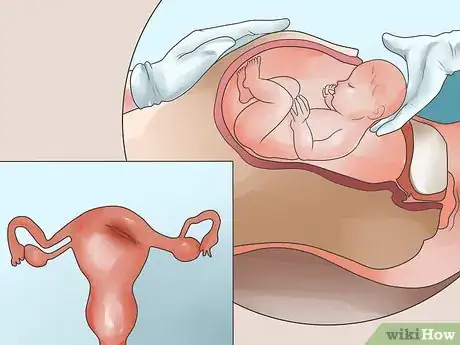
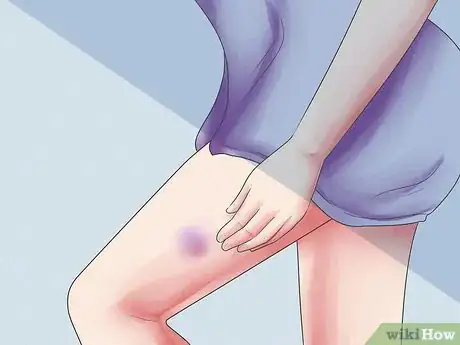
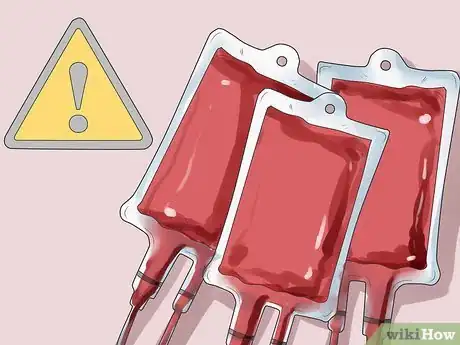




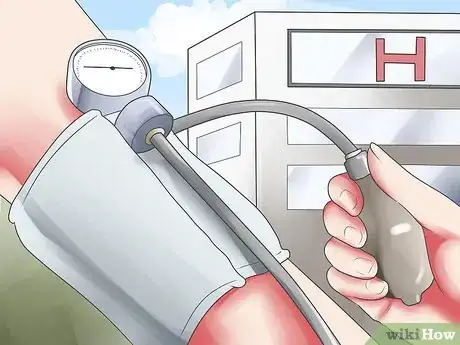

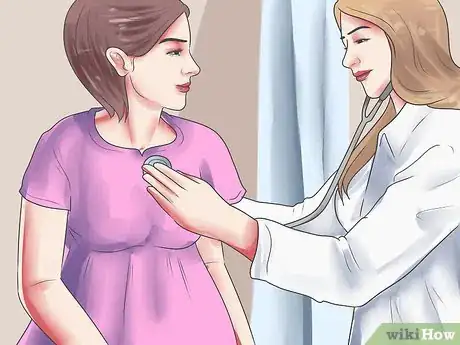
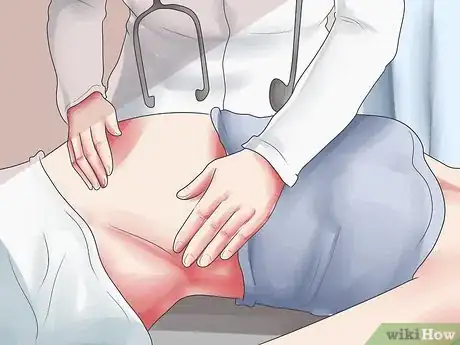
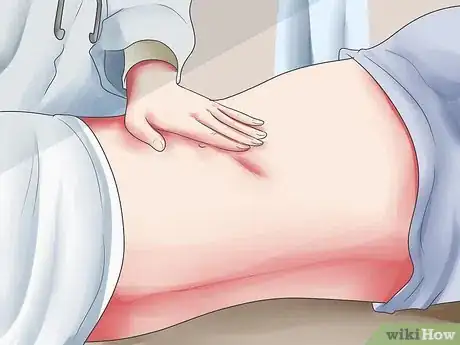
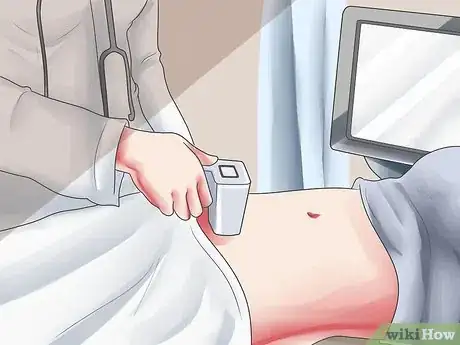


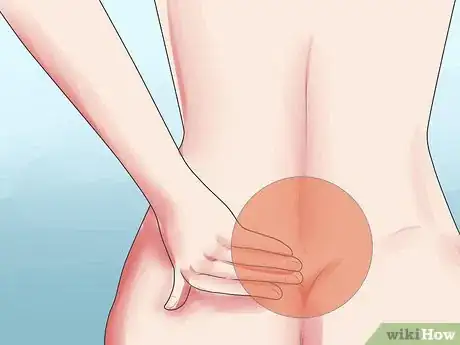

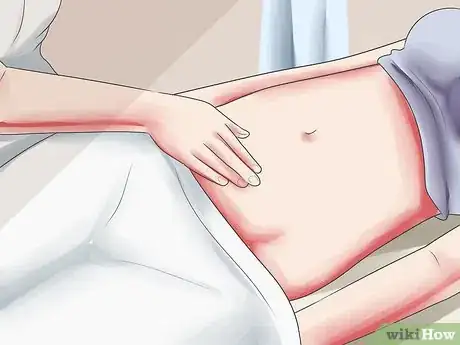


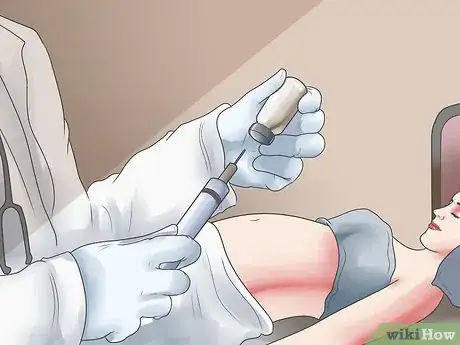


























































Medical Disclaimer
The content of this article is not intended to be a substitute for professional medical advice, examination, diagnosis, or treatment. You should always contact your doctor or other qualified healthcare professional before starting, changing, or stopping any kind of health treatment.
Read More...